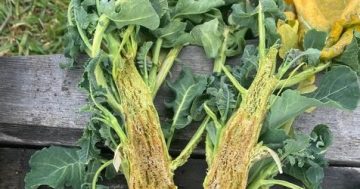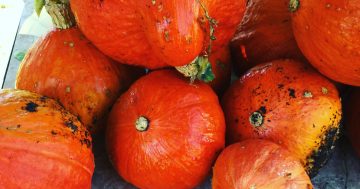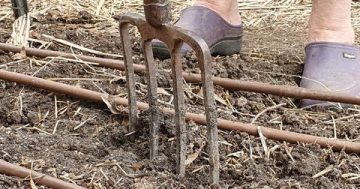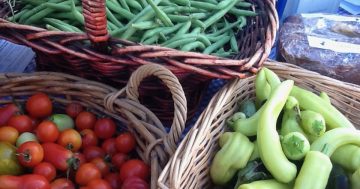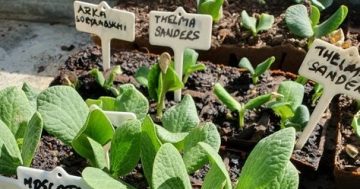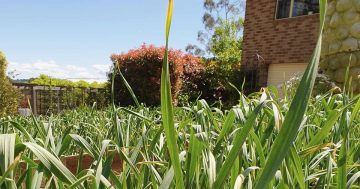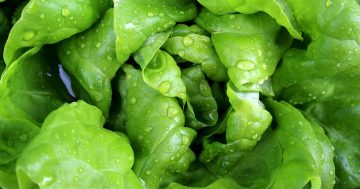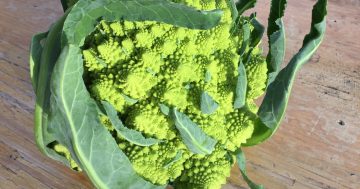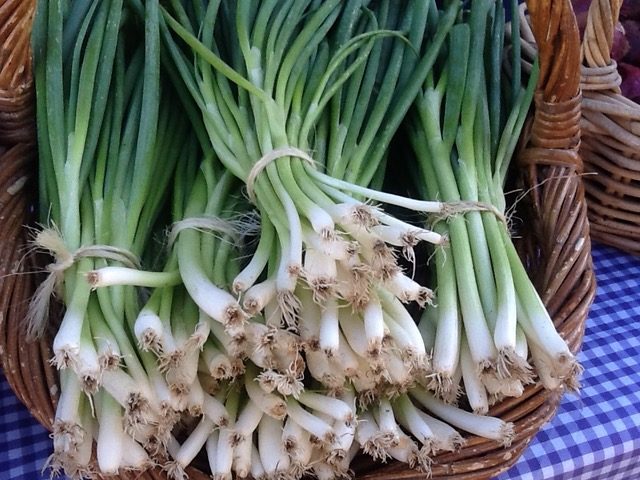
Spring onions should be planted in groups of around 10 seedlings with about 15 cm between each group planting. Photo: Wynlen House.
Now that Spring is here, the focus in the Wynlen House kitchen garden has turned to peas and onions. Starting from the premise that one can never have too many onions, the planting out of red onions, spring onions and leek seedlings has begun.
Red onions are so versatile that you really don’t need to bother with white or brown onions, although homegrown organic white onions offer an excellent light flavour surpassing what you can buy at the shops. The whites are also lower in sugar and sulphur than red ones, hence the more delicate flavour.
Members of the onion family are just so good for our health that it is worth eating them as part of every meal, so growing a variety of onion types means you have an onion to go with every dish.
Bulbing onions, for example, are not difficult to grow but there are a few actions that you can take to ensure good flavour, bulb size and storage capacity. Start with well-drained soil that is rich in organic matter. Amending your beds with lots of good quality compost, a complete fertiliser, and granulated seaweed (¼ cup per square metre) will provide all the nutrients required. Onions don’t like too much nitrogen.
Plant onion seedlings in groups of two to four, 20 cm apart within the row and three rows to the bed in a 75 cm wide bed.
Onions have shallow roots, so they can dry out quickly. An irrigation system, such as inline drip irrigation, for use in the warmer months or low rainfall periods is a worthwhile investment for the onion bed.
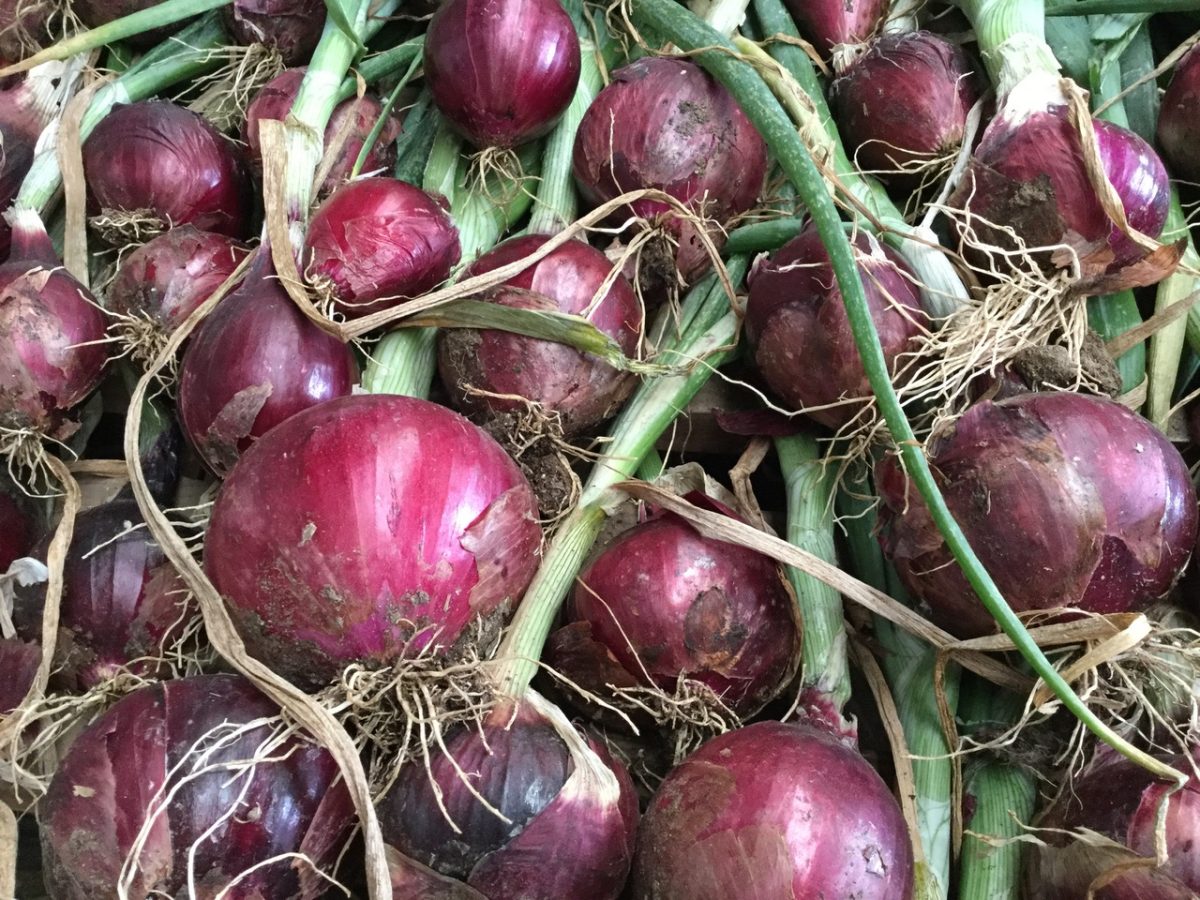
Store them correctly, and you could have red onions for months. Photo: Wynlen House.
Daylight length and temperature are both very important to onions to ensure bulb formation as they are photothermoperiodic (what a fantastic word!) Plant them in a spot that gets full sun from early morning to late afternoon. Weeds can be a problem, so prior to planting, make sure you water your bed well to germinate any weed seed in the soil, then destroy the seedlings with a good hoeing. Keep removing the weeds as the onions grow.
Mulching to a depth of 6 to 10cm can help suppress weeds and, on hot days, conserve moisture. Harvest onions when half the tops are falling over and starting to dry.
Curing is essential if you plan to store your onions for later use. Lay out your onions in a warm (23 to 32 degrees) airy spot out of direct sunlight until the outer bulb skins are dry and the neck is tight. Store them in a cool, dry area and enjoy them well into late autumn.
Spring onions are also planted in groups of around 10 seedlings with about 15 cm between each group planting. They are an excellent choice of vegetable to grow between your Brassicas, planting seedlings of both at the same time.
It is too early in most of our cool climate region to plant summer vegetable seedlings out in the garden as we are still likely to have frosts and cold snaps. Tomatoes, cucumber, sweet corn, fingerling eggplant, peppers such as chilli and banana peppers, basil and pumpkin seedlings should not be planted until early October in mild parts of our region and mid-November in colder parts. However, you can start propagating these seeds in a cold frame or a warm, sunny indoor space.
For good germination and seedling development, you need soil and air temperatures close to 20 degrees. If not, wait for warmer soils and weather and start with purchased seedlings.
In the meantime, keep planting everything you planted last month, including beetroot, celery, celeriac and bulbing fennel, brassicas, lettuces, Asian greens, kohl rabi, etc. Continue with frost and cold weather protection and seedlings planted in early Spring should develop very quickly.
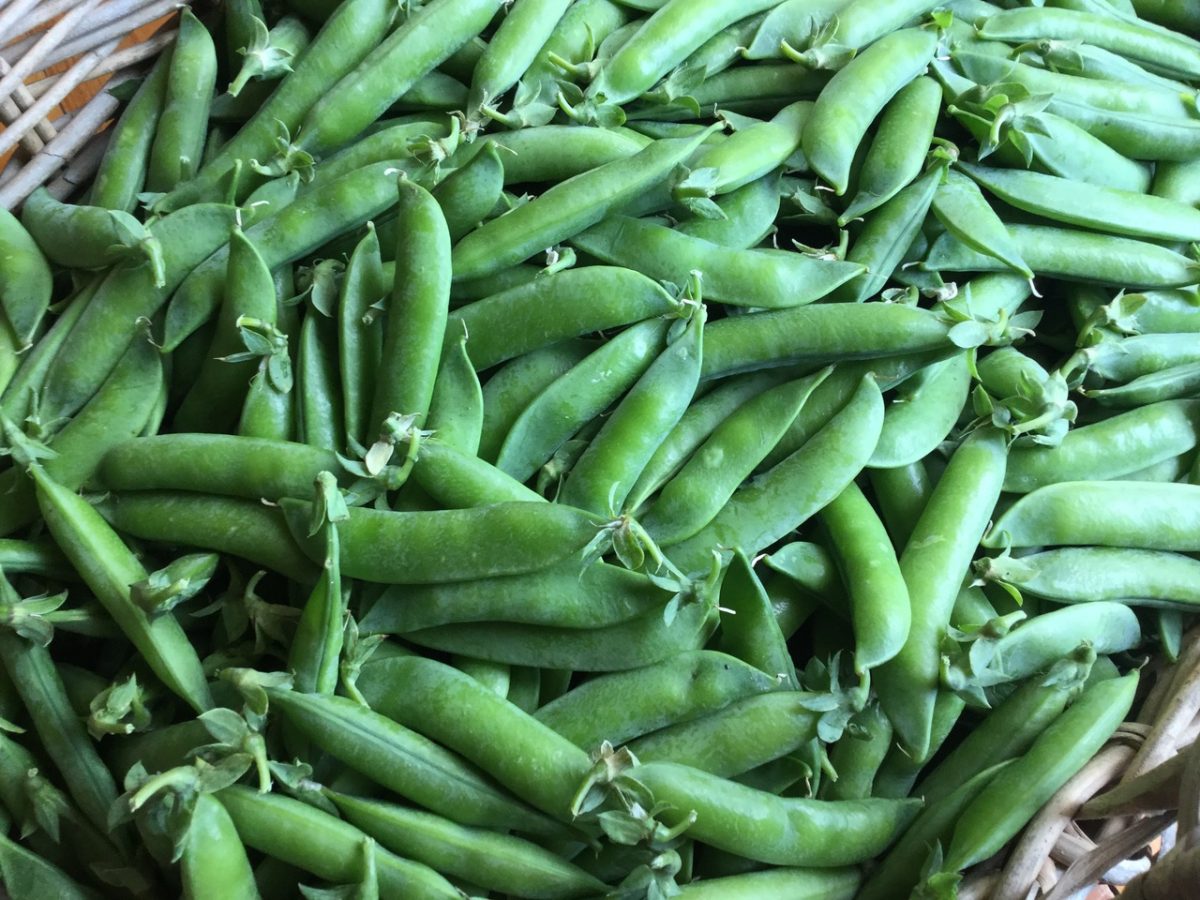
It is a good time to get your pea plants in. Photo: Wynlen House.
It is also a good time to plant peas, and seeds can be sown directly in the garden as they will germinate in the relatively cool soil temperatures of early Spring. Plant the seeds in well-drained soil with lots of compost. Add a complete fertiliser, and give them a seaweed-based liquid fertiliser regularly. All varieties of peas can be planted now – shelling peas, sugar snaps and snow peas. One of our favourites is the sugar snap, as it combines the best traits of both parent varieties – the sweetness and tenderness of the garden pea and the edible pods of the snow pea, and can be eaten raw or cooked.
Whether you decide to grow dwarf or climbing varieties, they all need some support. Most will need a trellis, but because they are generally poor climbers, a single-layer mesh trellis won’t work well.
Whether you decide to grow dwarf or climbing varieties, they will all need some support, so start trellising.
Bronwyn Richards and Helen Lynch run Wynlen House Artisan Village Farm and Learning Centre, a small village organic market garden in Braidwood, NSW. Since 2006 they have grown and sold fresh vegetables, eggs, preserves and garlic, and teach others to do the same.













